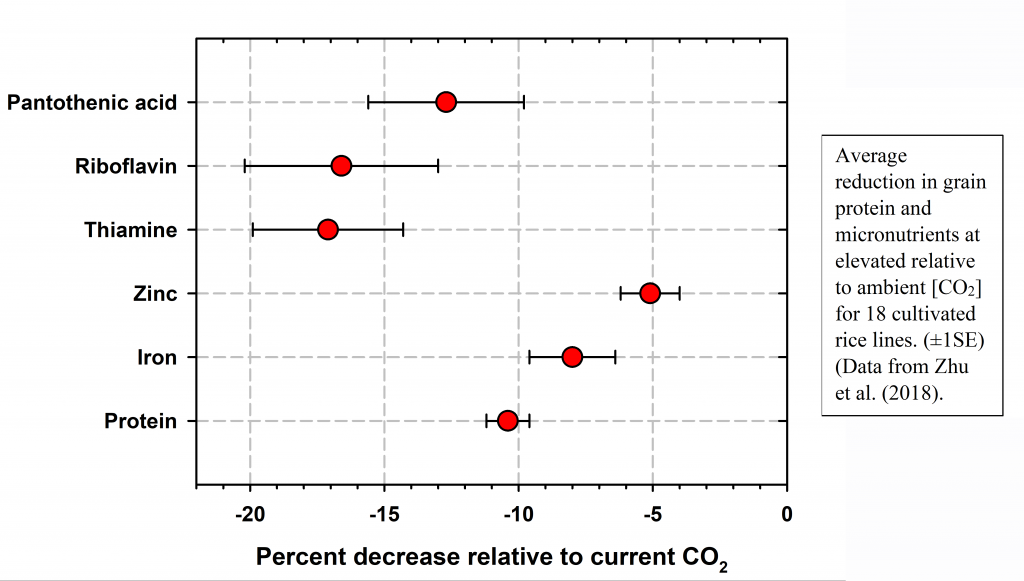After I retired, I was privileged to be able to team-teach a short course in pest management at the International Rice Research Institute at Los Baños in the Philippines. The course was run by Grant Singleton and David Johnson and was taught every second or third year to about 30 young scientists from Southeast Asia who were mostly concerned about rice cultivation, rodent pests and weeds in rice. The course was an eye-opener for me both to the world of rice, the extensive and excellent research going on at IRRI on rice cultivation, and the very bright and enthusiastic young scientists from Southeast Asia, many of which had never traveled outside their home country before taking this course.
Why should we worry about rice? Rice is the staple food of at least 4 billion people on Earth. That is one clear message that defines its importance for humans. When I was revising my ecology textbook some years ago, one of the reviewers complained about all the material on rice in my book and asked why I did not use more North American crops for examples. We should not be this short-sighted. Population growth and food security are now front-page issues on every continent, and scientists at IRRI (established in 1960 and now with more than 1000 staff) continue to do research with the goal of improving the yield of rice varieties and the livelihood of rice farmers around the world. Much of IRRI’s research has involved developing and improving varieties of rice to make them more productive, and our ecological goal in teaching about the ecology of pest management was to suggest ways of reducing losses to rice pests that could range from 15-40% of the total crop (Htwe et al. 2019). But as IRRI scientists realized long ago, the quality of the rice crop is as important as the quantity.
Whither rice cultivation in a world of climate change? Changing temperature and rainfall are key concerns for all crops but nutritional value is another. Zhu et al. (2018) have reviewed the possible effects of rising CO2 on the nutritional value of rice. The answer is not good. At many different sites Zhu et al. (2018) grew 18 varieties of rice in FACE (Free Air CO2 Enriched) experiments and measured the changes in the quality of the rice in protein and vitamin content. Current levels of CO2 are about 410 ppm, and in their experiments, they increased CO2 to 570-590 ppm (the level expected within this century). One graph illustrates their main results:

Folate (vitamin B12) is not shown because it is off the graph at -30.3% decrease.
About 600 million people, primarily in Southeast Asia, consume ≥50% of their per capita dietary energy and/or protein directly from rice (Smith and Myers 2019). The concern is that even small losses of these vitamins in rice caused by higher CO2 could have potentially large impacts on global health, placing tens of millions of people at new risk of deficiencies in one or more of these nutrients. Singer et al. (2019) review the main biotechnological research strategies that are currently underway with the aim of improving photosynthetic efficiency and biomass production/yields in the context of a future of rising CO2. Rising temperatures change the developmental processes of plants and the key for crops is artificial selection for varieties more adapted to warm temperature but for wild plants only relatively slow natural selection is available to achieve the same goals, which may well increase the rate of extinction of our native plants without some intervention (Lippmann et al. 2019).
Another issue that is behind rice cultivation as well as all modern agriculture is soil nutrient conservation. At IRRI they grew several rice varieties for demonstration purposes, cultivating them on rich volcanic soils. One of their treatment plots was a control – no fertilizers were added, and the same unchanged rice variety was used each year. One of the results of these demonstration plots was that the control plot, which we had assumed should be stable and sustainable, was declining in rice production per ha at a rate of 1-2% per year. During the 38-year study (1968-2005) climate was changing, CO2 was increasing, air pollution may have changed, so that soil productivity is only one possible explanation of these declining rice yields. Slow changes in soil fertility are difficult to track and yet vitally important in the long run if we are to have sustainable agriculture under climate change and human population growth. Now it is clear that we not only need to maintain soil fertility in agricultural soils for high productivity but also need to be concerned about high quality of the grains and vegetables being produced in a climate-changing world. We do not live in a constant environment and can no longer assume stability in the quality of our food supplies.
Htwe, Nyo Me, Singleton, G.R. and Johnson, D.E. (2019). Interactions between rodents and weeds in a lowland rice agro-ecosystem: the need for an integrated approach to management. Integrative Zoology 14, 396-409. doi: 10.1111/1749-4877.12395
Lippmann, R. et.al. (2019). Development of wild and cultivated plants under global warming conditions. Current Biology 29, R1326-R1338. doi: 10.1016/j.cub.2019.10.016
Singer, S.D. et al. (2019). Biotechnological strategies for improved photosynthesis in a future of elevated atmospheric CO2. Planta 251, 24. doi: 10.1007/s00425-019-03301-4.
Smith, M.R. and Myers, S.S. (2019). Global health implications of nutrient changes in rice under high atmospheric carbon dioxide. Geohealth 3, 190-200. doi: 10.1029/2019GH000188
Zhu, C. et al. (2018). Carbon dioxide (CO2) levels this century will alter the protein, micronutrients, and vitamin content of rice grains with potential health consequences for the poorest rice-dependent countries. Science Advances 4, eaaq1012. doi: 10.1126/sciadv.aaq1012